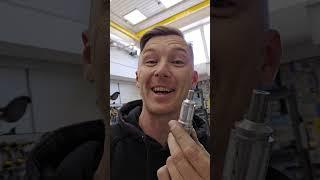
ARR stack with Gluetun VPN (build your personal docker-compose.yml file)
Комментарии:

Amazing explanation!!!!
Ответить
Отличный видос, спасибо!
Ответить
Great video explanation!! But why we need 2 different inode ?? We can check everything from regular file inode & store as well ( all updates are propagating to regular file inode ) , is it related to less complex and fast search ?? Also one more que while deletion - inode deleted the required space is ready to use in disk means it will erase the value on physical disk or just change the status that ready to use ( after deletion its not recoverable right? )
Ответить
Very good. My contribution to you: add "alias c='clear' " in your .bashrc and you will clear with just typing 'c' and enter
Ответить
Aha, it's very similar like a FAT drive. (File Allocation Table)
Ответить
nice explaination
thx

You do not need a partition in order to have a filesystem (even though it is the usual case that a FS resides in either a partition or an LVM logical volume).
Would have made sense to have a btrfs mount point in the "df -i" output to demonstrate the case of dynamic inode generation (it shows 0).
Hardlinks are not created in a directory inode but in the directory (data) itself. Which is not the same, just as a file (the data) is not the same as the inode of that file.
A new hardlink does indeed not have to be in the same directory but (and that is the difference to softlinks) you CANNOT create it "anywhere you want", it is required to be on the same filesystem (you have only one "physical" FS IIRC but especially for /home and /tmp that is not something that can just be assumed).
Quite obviously . and .. are NOT the two hardlinks to a directory. They have (in your example) different permissions, owners and groups. Referring to the same inode this data is always identical for hardlinks. The two hardlinks to a directory are the . and the regular entry in the parent directory. As you can easily with "ls -i".
. in the ls output is not the current directory but the directory ls is listing at that point. That happens to be the current directory if you run "ls -la" but not if you run "ls -la subdir".
I am a bit surprised that you mentioned that every subdirectory increments the hardlink count but did not explain the reason for that. The .. entry in each subdirectory is the additional hardlink.
Inode ID 1 is not reserved "in the filesystem" (the root of btrfs has inode ID 1) but is used in ext[234] for the badblocks list.
Not really related to the subject of the video but I was surprised how often you typed the file names. That could have been done much easier with m<Tab> or <Alt>-<dot>. And you do not go to your home directory with "cd /home/marek" but with just "cd". That would be quite useful for Linux newbies who are the target audience of this video.

Hey Marek, perfect, succinct, clesr. All in one go. Thanks a lot
Ответить

























